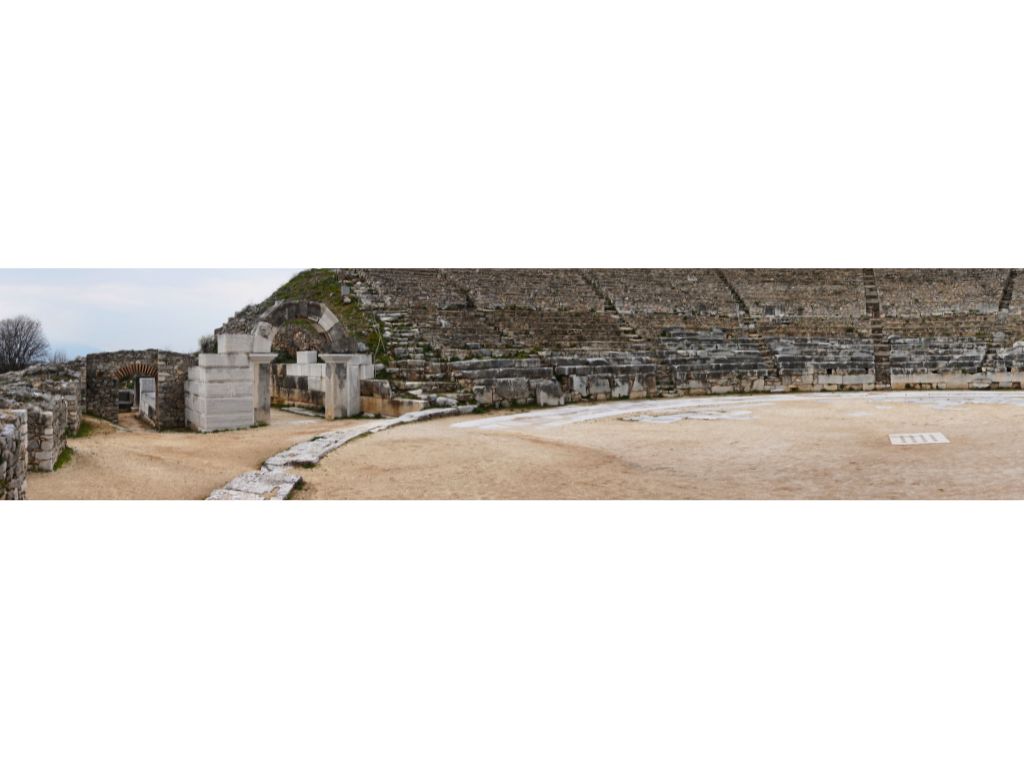The early church gathered in a simple space, in the shape of a round. The church people sat facing one another. This makes sense because the emphasis in the early church was the equality of the body of Christ.
In 345 A.D, the church building was demolished but the marble mosaic floor was not destroyed. It remained intact and reused by the church community when the new owners of the Octagonal Church built a new building on top of the old mosaic.
The flooring of the church in Philippi was the common mosaic of the secular houses of its time. The flooring is not identified as a unique mosaic tile. The entrance to the room was in the middle of the long side, not through one of the short sides. So, a person entering the room, entered directly in the middle of the room. From the position of the entrance, we can suppose that the seats were placed all around the room, facing the door. (Lydia’s Chapel is a 1970’s, modern interpretation of the ancient Octagon Church in Philippi.)
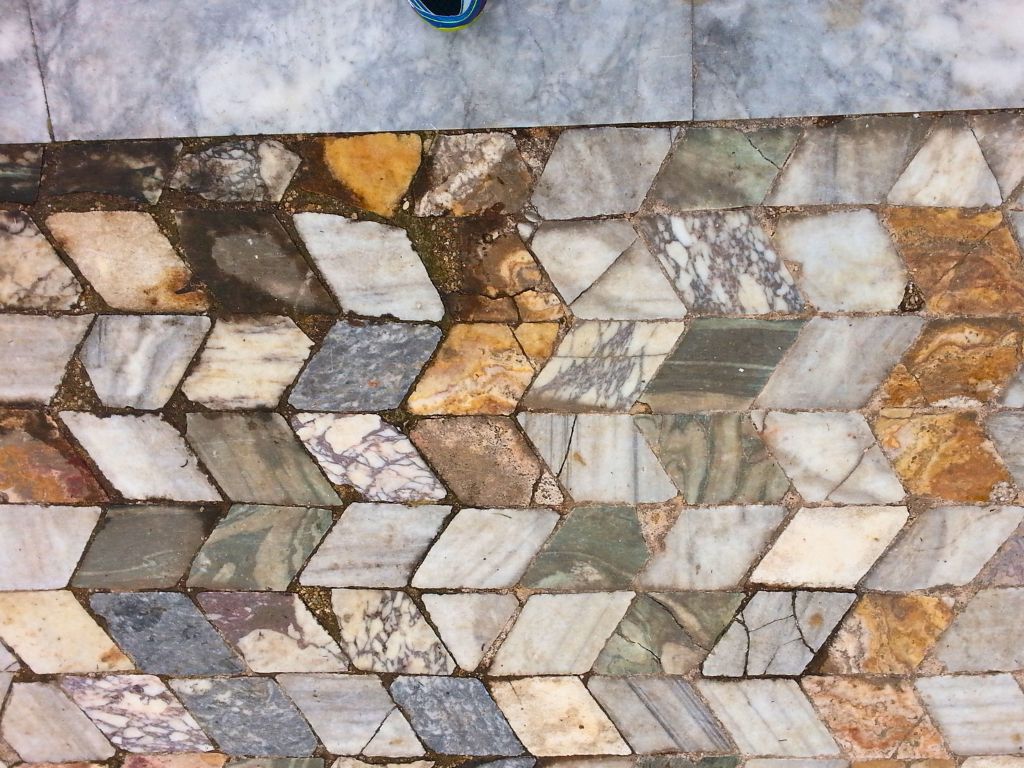
Before we go further to speak of later additions on this building, let us open the Bible to 2 Corinthians. Paul wrote, in 2 Corinthians 4:5. For what we proclaim is not ourselves, but Jesus Christ as Lord with ourselves as your servants (slaves) for Jesus’ sake.
Paul here is saying, “Look, we proclaim Jesus Christ, not ourselves. We, Paul and Timothy, are your slaves.” Paul was not presenting the church people as slaves to Christ. He was saying, “We are slave to you all – We (Paul and Timothy) are slaves to you who are the church, the body of Christ.”
Imagine the Apostle Paul or Timothy as the leaders of the church and they say to you, “Look, do you know who we are? It is us, Paul, and Timothy. Church, we are your slaves.” A slave, a δούλος, was a property, like a piece of furniture. This would give the right to answer back a command, something like, “Take me on your shoulders now and bring me to my home,” or “Wash my face,” or other commands. The word slave is different from the word servant because a servant is a free person whose job is to be a servant.
Paul and Timothy presented themselves to the church people as slaves to Christ. “We are slave to you all – We (Paul and Timothy) are slaves to you who are the church, the body of Christ.” But that changed in Philippi, Greece. The focus on equality shifted when the leaders of the church, the ones who were the slaves, became the ruling caste.
In the early church of Philippi there are no signs of a built-in table, or an altar, or built-in seats (like thrones) for special church people. Everything in the room was portable and wooden. Nothing was built on the mosaic floor.
Then, a little platform, the bema, was the first thing added to the church building. The bema was a platform where somebody could start to speak to the people who were sitting all around, or it was for a place for The Lord’s Supper on the wooden platform/table.
In Philippi a mosaic tile, made by Porphyrios in honor of the apostle Paul, was marked by an inscription, “Porphyrios, bishop, made the embroidery of the basilica of Paul in Christ.”
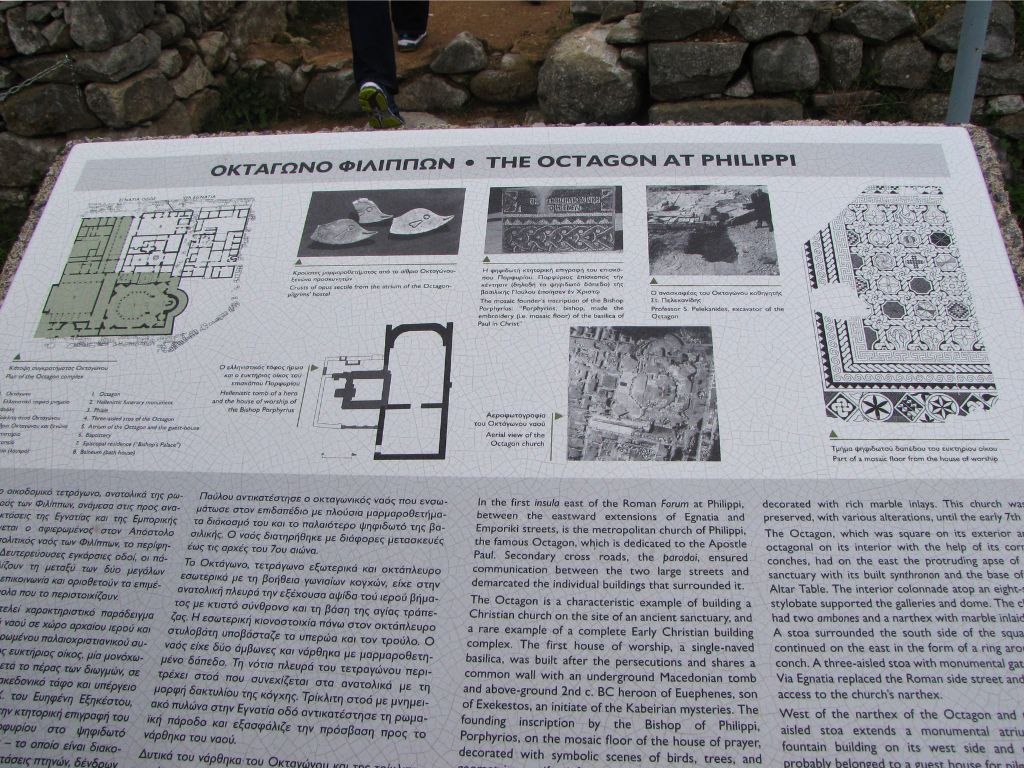




Other old mosaic tiles are also around the Octagon Church in Philippi, Greece:
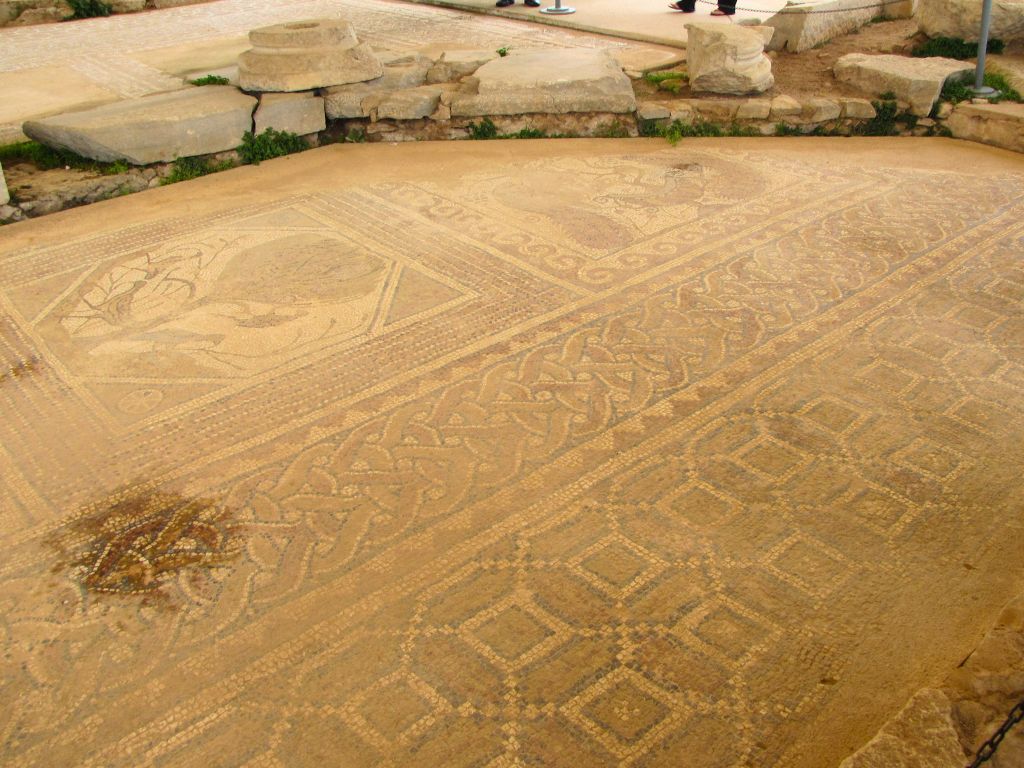


By the ruins of the Philippi Octagon, we can understand more about the process of how the church changed in its early history. In the fourth century the church passed from apostolic simplicity to the complexity of the state church.
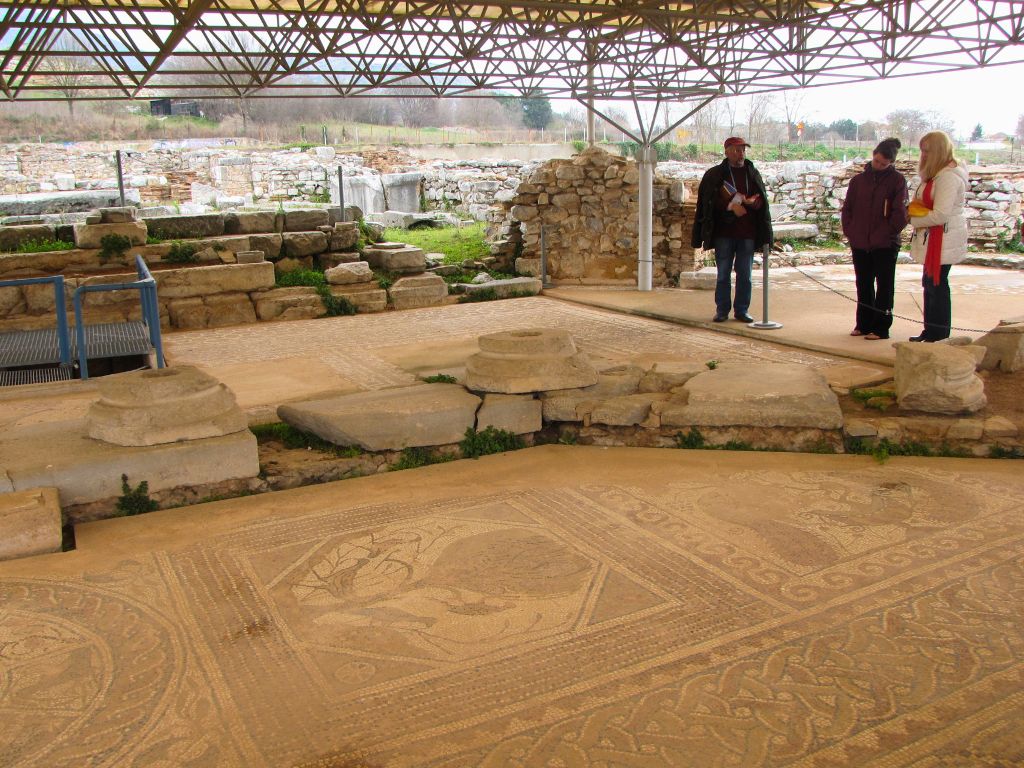
In 391 A.D., Theodosius made the slaves of the church the ruling caste of the church, and part of the wall of the church was demolished, destroying the architectural symmetry of the building. An additional area was added, the apsidal area. From the outside the building seemed to be a square, but, inside it, was an octagon.
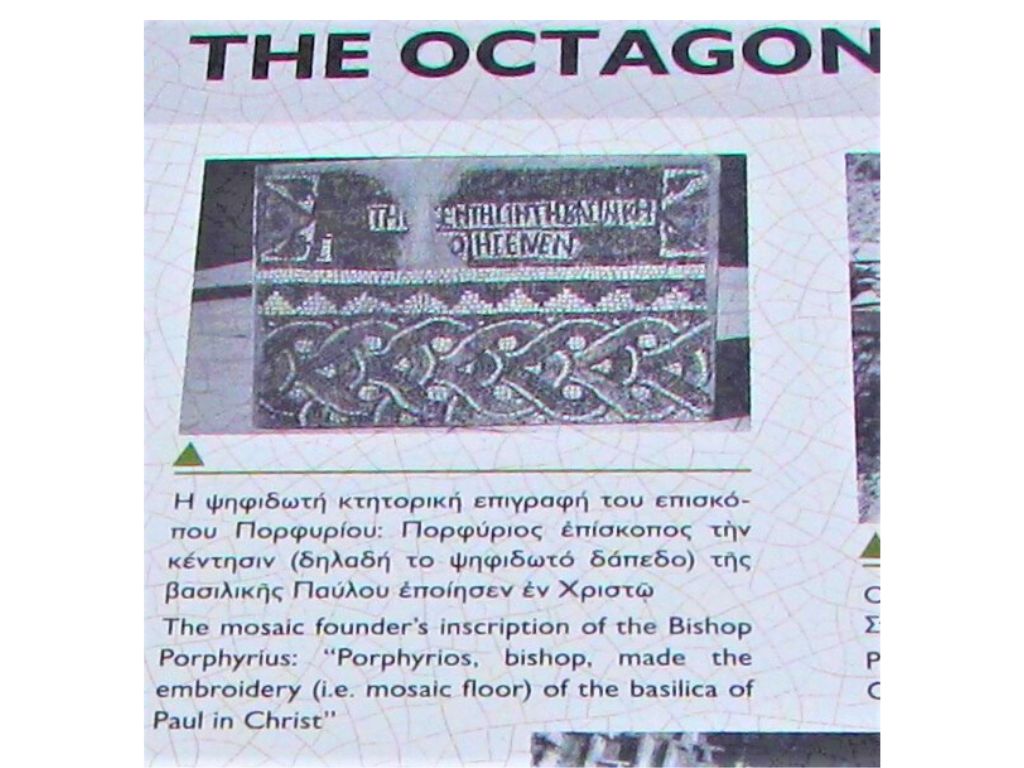
The synthronon became the new front row for the authorities of the state church. The synthronon became the common front for the authorities. Those who had been slaves became the rulers.
The early church preexisted the addition of the synthronon, but with the addition of the synthronon we had this weird thing in church: the authorities sat up in front, but the people still sat in the round, not facing the authorities.
Below is a picture of the white marble fence of presbyterium – remains. Shown to the right of the fence are the circular remaining holes for the support pillars to hold the fence.
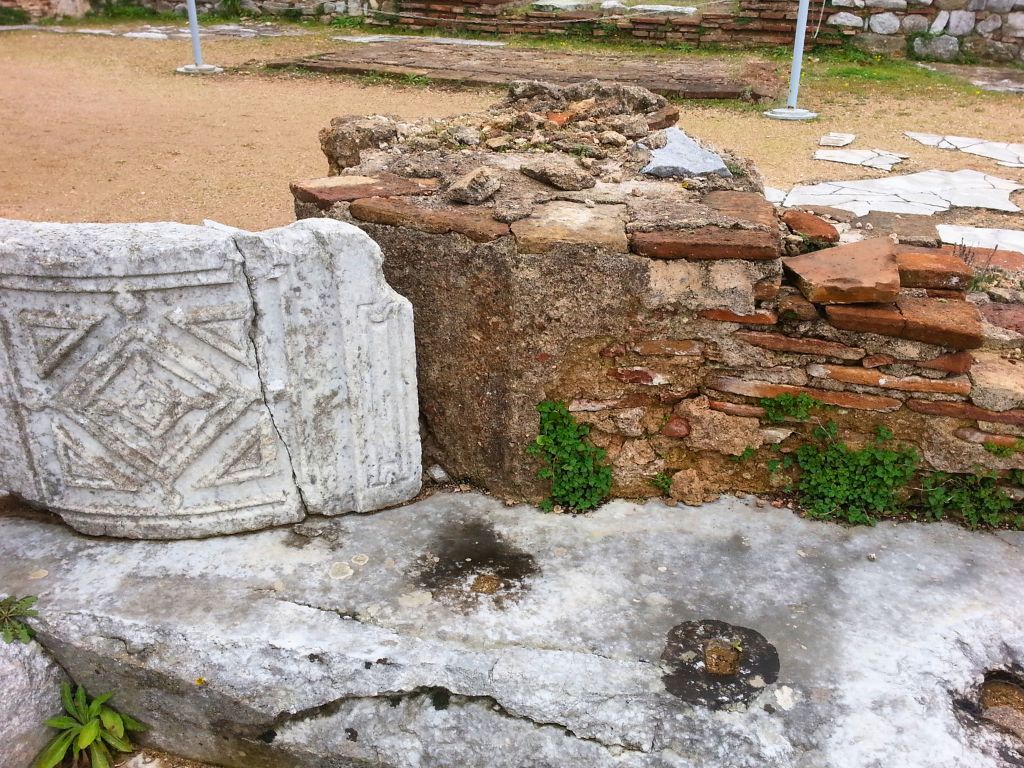
The area in front of the leaders’ “thrones” was elevated and surrounded by a fence called the fence of presbyterium (or the fence of presbytery.) And the leaders, those who were formally slaves were now rulers (above and no longer equals.) The rulers could not sit at the same level as the common believers (their subjects.)

Theodosius said, “The church has to be a state religion.” So, all over the empire, independent church communities, churches which had developed their own personal character, had to form unions under the observation of a state officer. The state officer, called the Metropolitan Bishop, was appointed by the emperor to give an account of the state churches to the emperor. Bishop in Greek means overseer, the one who looks and is responsible for what is under him. The state church adopted a pyramidal administration.
If a church denied joining Theodosius’ scheme, it automatically was claimed as heretical. Regardless of what that local church believed, without ever being asked about doctrine, they were claimed as heretics. This is the first time in history when “the church” was no longer persecuted by the state, however the real church was persecuted by the state.
At the same time in history, the church adopted the sacrament of transubstantiation. So, the church authorities needed not a portable table, but an altar. And for that reason, inside the elevated section in front of the thrones they built an altar.
In 395 AD/fifth century, when the church became the state church it also became the owner of three city quarters.
The church was no longer a poor, persecuted, underground community. It had authority and treasures. Gold and silver coins from different periods up to the fifth century have been found on the flooring of the church. The pagan temple, which had coexisted and functioned alongside the state church up to this time, was not demolished. It became the property of the church.
The Via Ignatia ran along the site of the amphitheater. Part of the road connected with Via Ignatia was closed and turned into corridors of the church complex.
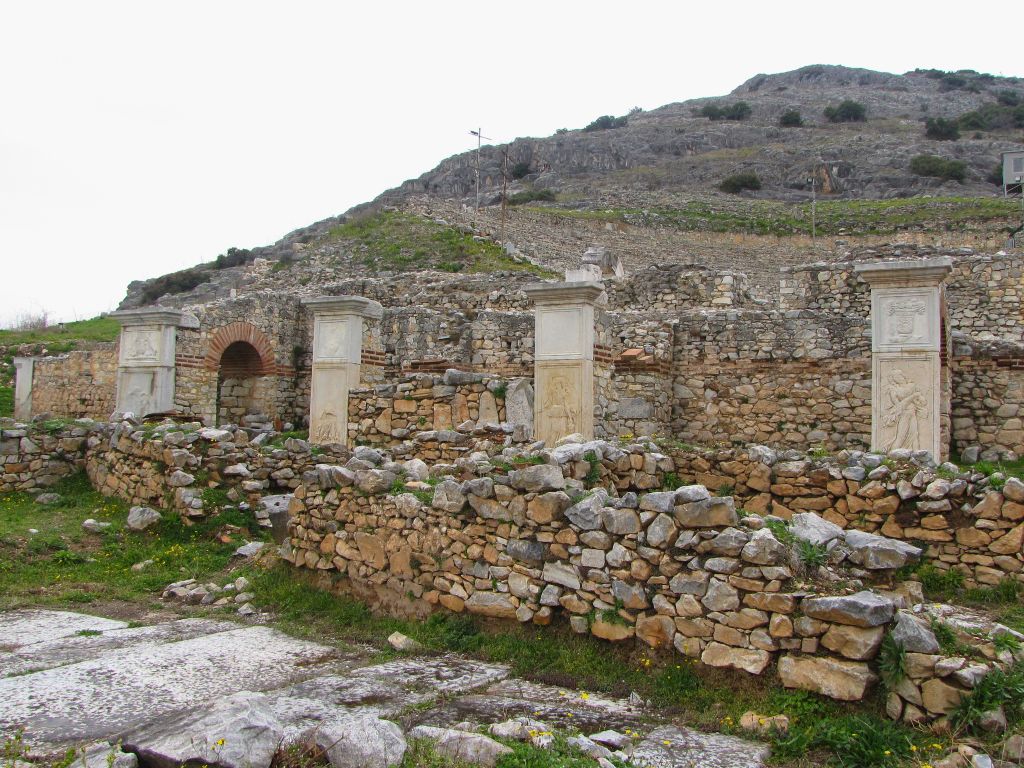
A vat was used for making wine and big jars were used for storing grain.


The church had a guest house and public baths.
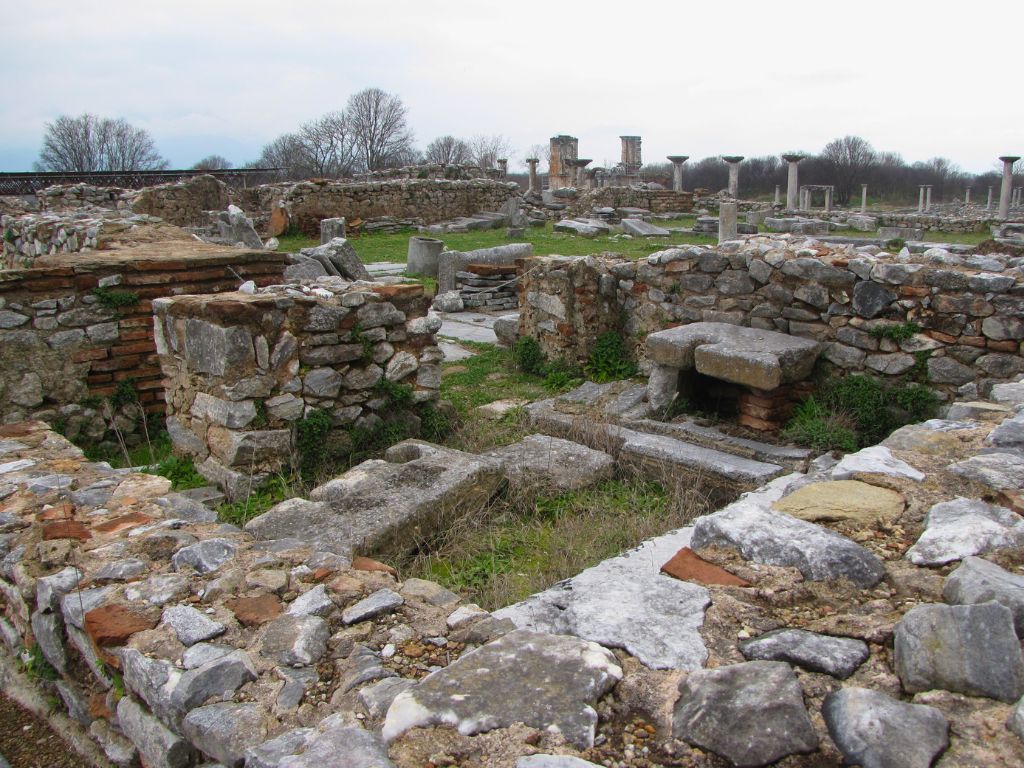
A baptistery was added to the complex in the fifth century.
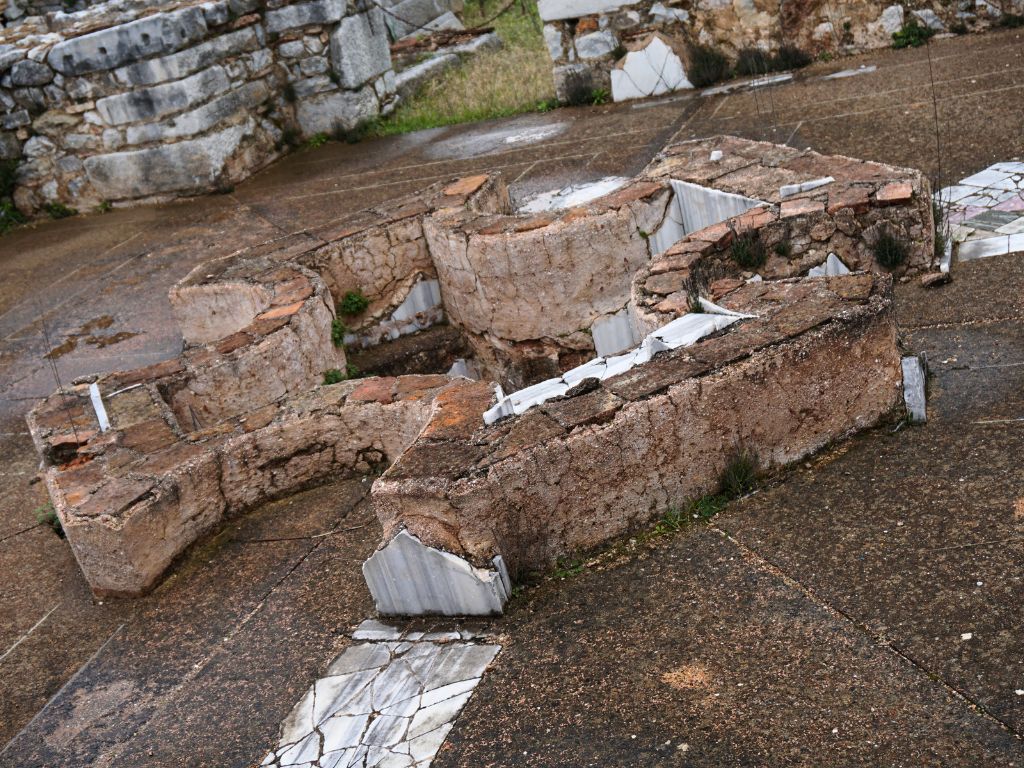
The little village of Philippi was excavated in 1950 and opened to the public in 2000.
Why wasn’t it open to the public for 50 years? The interpretation of the monuments created a fight among the three groups of archeologists: the Greek Orthodox, the French Catholic, and Greek and French Atheists. The Atheists said, “Look, we found the missing link between idolatry and Christianity. Look at the location of the pagan temple and the Christian church. They are next door to each other. ” The Atheists believed that Christianity was the development of ancient idolatry. The Greek Orthodox and the French Catholic found elements that did not fit with their present church tradition. They claimed their tradition was directly from Jesus Christ and the apostles, although their traditions are not identified with each other. Although they say they have the same spring, they are not the same.
For that reason, still today, the archeological announcements for Philippi are contradictory and not complete. You need to include the church history of the fourth century, match the dates, know what happened and why it happened.
Across the street from the little village of Philippi, Greece is the ancient theater, where Christians were persecuted.
